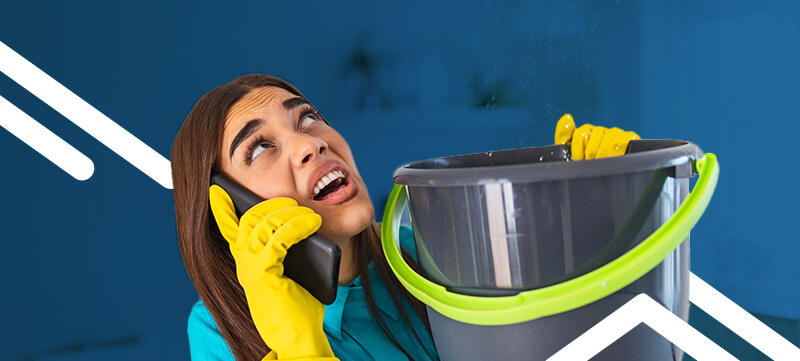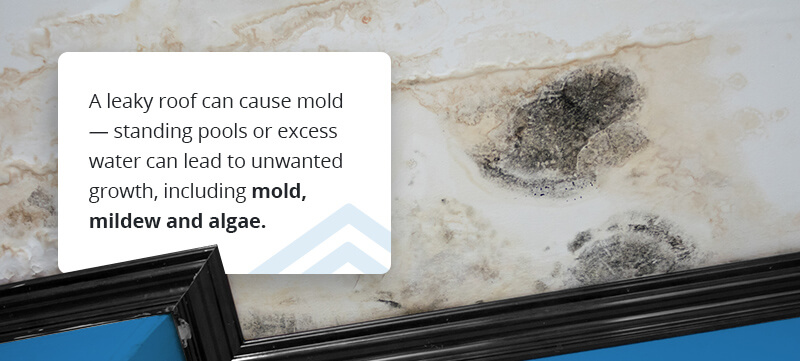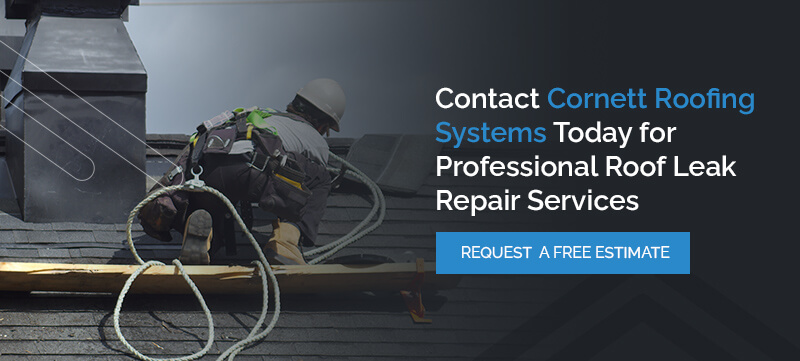A leaky roof can cause mold — standing pools or excess water can lead to unwanted growth, including mold, mildew and algae.
Treating a mold infestation is challenging and expensive, especially if it has spread into your home’s attic, walls and crawlspaces. Mold spores can also spread to your ducts, causing mold spores to move around your home whenever you turn the heating or air conditioning.
While mold is bothersome and spreads quickly, it also poses risks to your and your loved ones’ health. Mold can cause illness, especially for those with allergies, asthma or chronic obstructive pulmonary disease (COPD).
Mold also naturally irritates the skin, eyes, nose, throat and lungs and can lead to long-term health complications for you, your family or your pets if exposed for long durations of time.
3. Fire Hazards
A roof leak can cause a fire when water infiltrates your roof and comes into contact with electrical wiring. Because rainwater carries minerals like iron, magnesium and sodium, it carries an electrical current.
When the rainwater’s electrical current contacts ceiling wiring, it can cause a spark. If the spark contacts flammable material in your attic, like clothing, certain forms of insulation like cellulose or spray foam or wood shavings and dust, it can ignite an electrical fire that spreads quickly and is difficult to put out.
Plus, if you or a loved one inadvertently touch an electrically-charged wet fuse, it could shock and significantly harm you.
4. Increased Energy Bills
When water infiltrates your attic, it can damage your home’s insulation. Most homes have cellulose loose-fill or fiberglass insulation. Water significantly damages both types of insulation. For example, cellulose has plant fibers that naturally soak up moisture. A significant leak can cause the insulation to absorb water and breed mold or mildew.
Likewise, water can cause your attic’s fiberglass insulation to clump up and become ineffective. As a result, your home loses warm air in the winter and cool air in the summer. This loss of energy results in drastically increased energy bills.
Additionally, a leak in your roof can cause water to seep into your home’s wall cavities. In this case, you’ll need to open up the drywall and air out the insulation with commercial drying equipment or replace the insulation altogether to prevent unwanted mold growth and structural damage.
5. Structural Damage
In addition to ceiling damage, an unnoticed or unattended leak can wreak havoc on your home’s structural safety and integrity. For example, water ingress can rot rafters and ceiling joists and damage wall framing, fascia boards, trimming, floors and more.
If the leak is significant enough, the water can cause a full or partial roof collapse or seep into your home’s foundation, leading to more rotting and foundational instability.




